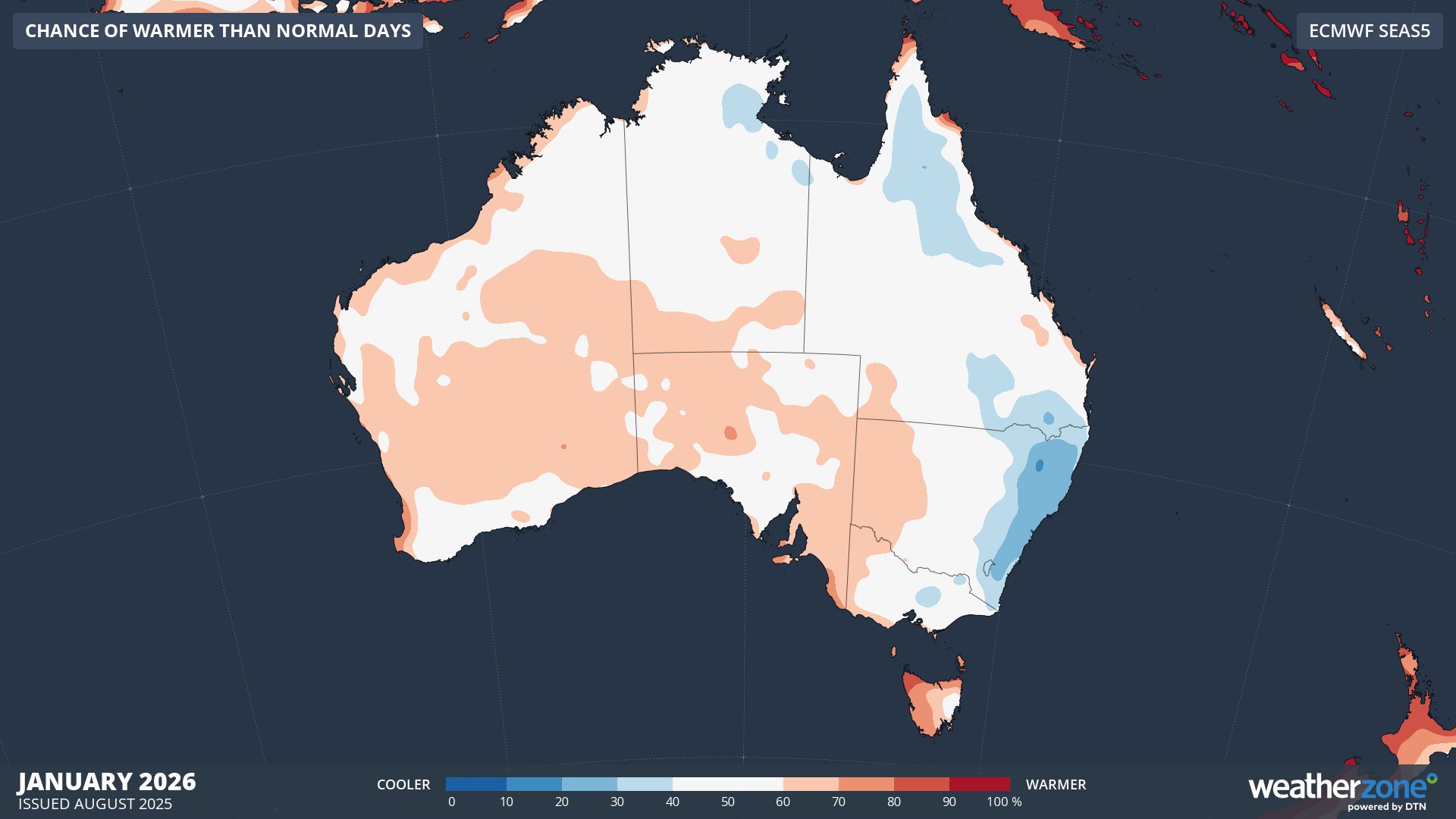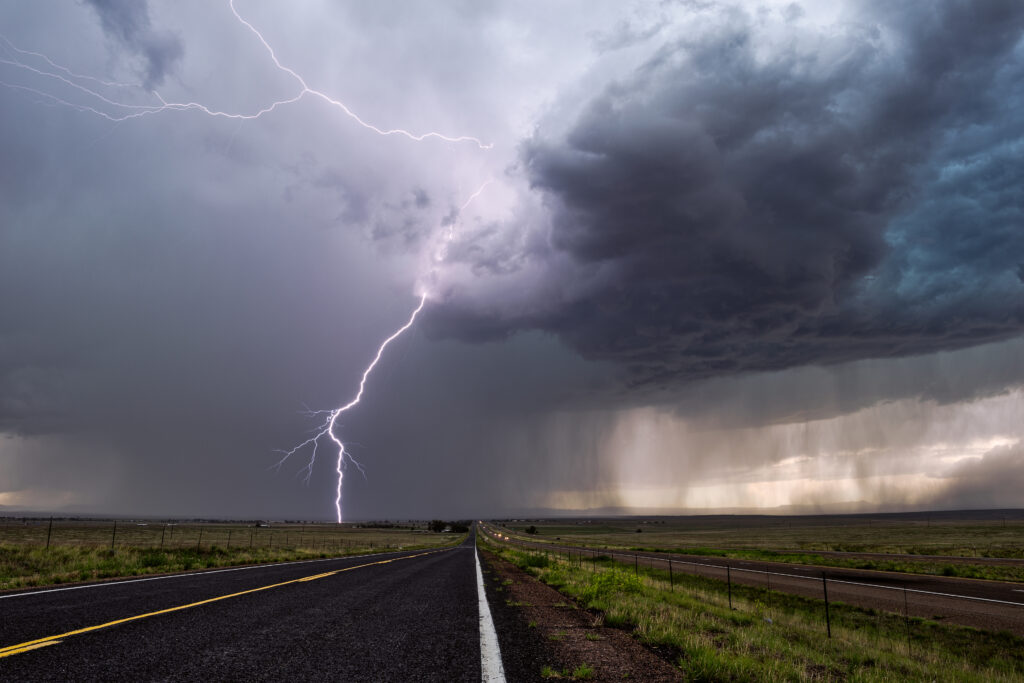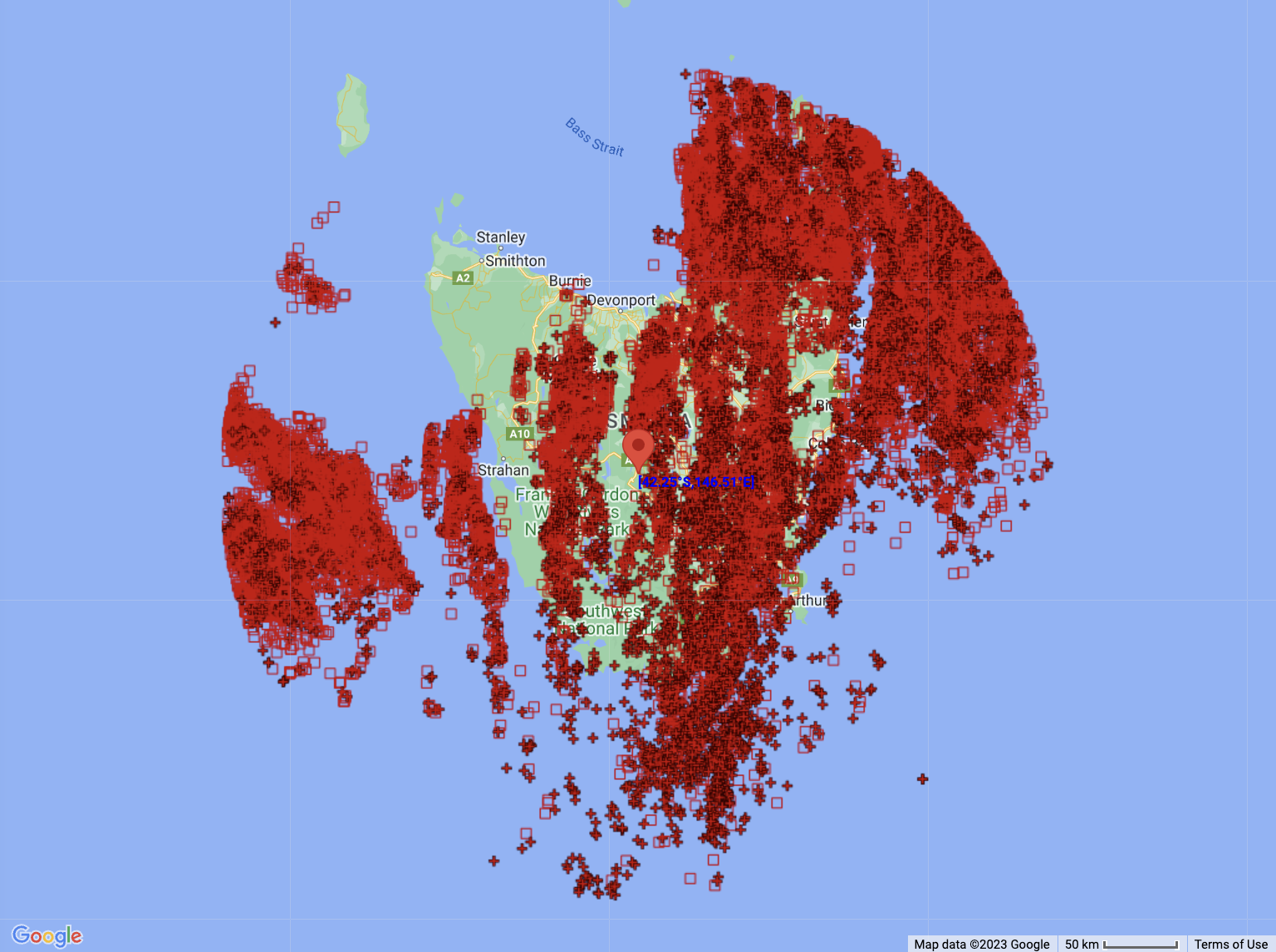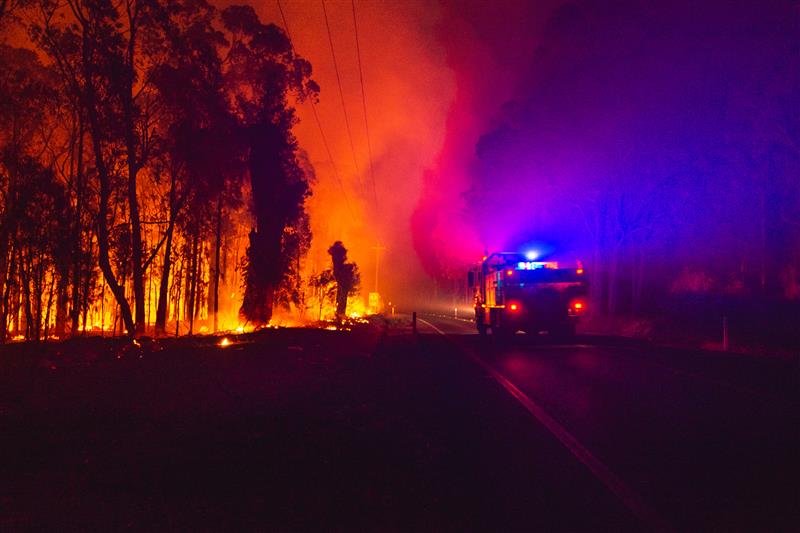Summer in Tasmania can see above average temperatures and drier than normal conditions, leading to many areas of the state becoming increasingly vulnerable to fire. When lightning strikes dry vegetation, there is a greater likelihood of ignitions and increased fire risk everywhere – from the world-renowned Tasmanian Wilderness World Heritage Area (TWWHA) to the suburbs.

Image: Seasonal Outlook Chart showing Tasmania expecting to see warmer than normal days in January 2026, according to the ECMWF SEAS5 model.
About Tasmania Fire Service (TFS)
The Tasmania Fire Service (TFS) is a diverse organisation of career firefighters, volunteers, and State Service Employees. In partnership with Tasmania Parks and Wildlife Service and Sustainable Timber Tasmania, the TFS protects the Tasmanian people, infrastructure, and unique environment through emergency response, education, and more.
Improving Tasmania’s visibility of lightning
Greater situational awareness of lightning across the state has been required to support Tasmania’s fire agencies in their preparedness, including improving lead times through more accurate forecasting, and optimising detection and response to potential fire ignition.
Tasmania’s existing sensor network has long needed a significant upgrade to paint a more complete picture of lightning – its behaviour, impact and location.
Lightning and the ignition of bushfire
Lightning, particularly dry lightning, is the primary natural cause for the ignition of bushfires in Australia. Dry lightning occurs when high temperatures cause the thunderstorm’s rain to evaporate before reaching the ground, often sparking multiple fires at once.

Image: An empty road surrounded by fields with a lightning bolt in the distance from a thunderstorm.
In the bushfire season of 2018-19, lightning ignited the Gell River Fire in the TWWHA. Beginning on December 27, 2018, the fire burned continuously for almost three months, despite a valiant state and nationwide response.
On January 15, 2019, over 2,000 lightning strikes ignited a further 60 fires that spread across the state. Though many of these were brought under control quickly by the TFS and supporting fire crews from Tasmania Parks and Wildlife Service and Sustainable Timber Tasmania, others took much longer due to inaccessibility and rapid acceleration.
By the end of the season, more than 200,000 hectares across Tasmania were burned – severely impacting people, townships and wilderness that were already painfully vulnerable due to drought.
Tasmania Fire Service leverages accurate lightning data with DTN APAC’s Total Lightning Network (TLN)
The TFS engaged DTN APAC to advance lightning detection in the state and continue their efforts to prepare for increasingly challenging fire seasons ahead. The first solution implemented was Total Lightning Network (TLN), an Australia-wide network of sensors that deliver real-time lightning data feeds and accurate detection to government agencies, businesses and the public.

Image: Lightning detected by the DTN APAC’s Total Lightning Network (TLN) during a thunderstorm outbreak in Tasmania in late October 2023. There were 35,055 strikes detected within a 300 km radius during this event, with 15,451 of these being cloud-to-ground strikes.
Working collaboratively, the TFS and DTN APAC installed a much-needed additional lightning sensor for Tasmania in the township of Miena, in the Central Highlands. Along with four existing sensors, this vastly improved the accuracy of the Tasmanian network, providing comprehensive lightning data feeds for the TFS, accessed through DTN APAC’s Total Lightning Network (TLN). It has significantly enhanced coverage for the state to ensure that all lightning is classified and visualised in real-time. The raw lightning sensor data is available to all who require it across government, private and public sectors, providing broad benefits where needed.
“The partnership with DTN APAC in the installation of an additional lightning sensor at Miena represents a major improvement to Tasmania’s lightning sensor network, and a significant uplift to our capability to more accurately locate and characterise lightning strikes across the state.”
– Chris Collins: Director, Community Fire Safety, Tasmania Fire Service.
DTN APAC’s weather data and analytics support fire and emergency responses
The TFS have also integrated the full suite of services offered by DTN APAC. These solutions serve the operational parameters of the TFS and provide vital data and analytics to support their response to weather-related and fire emergencies.
From weather nowcasting and forecasting, to severe conditions alerting, bushfire spread prediction and aviation support, DTN APAC’s solutions provide a solid foundation for state-wide situational awareness. With more comprehensive data and systems available, the TFS now has the tools to:
- Optimise fire management;
- Detect lightning and ignition points;
- Enhance alert communications; and
- Identify impactful weather risks.
“This truly is a model relationship for DTN APAC – working with emergency services to the benefit of public safety; not just in Tasmania but across Australia and globally. Tasmania Fire Service and DTN APAC deepening their relationship is a great example of public and private sectors partnering to benefit all.”
– Phil Perkins, Meteorologist and Senior Sales Executive | Connect on LinkedIn
Learn more about how DTN APAC can support your operations within the Forestry and Emergency sector today. Reach out to our team of experts at sales.apac@dtn.com
Thumbnail image: iStock / mdesigner125






